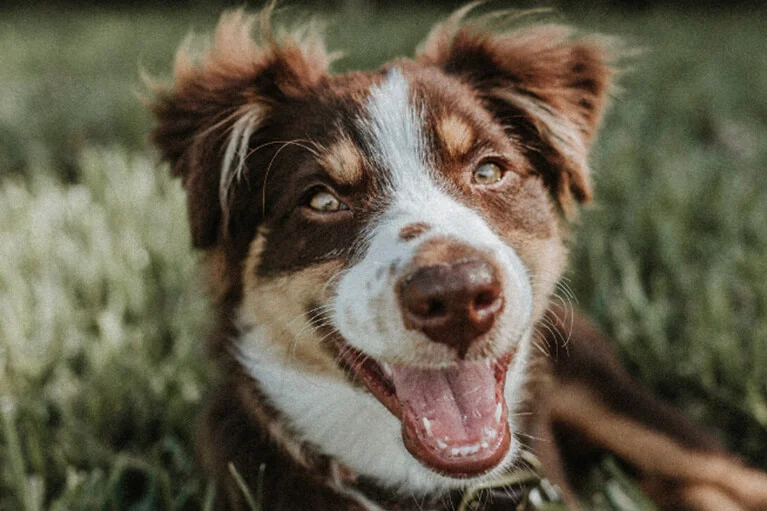
5 TIPS FOR A HEALTHY MOUTH
DOG DENTAL CARE

Dental care for dogs is extremely important. Unfortunately, it’s an aspect of care that is frequently overlooked by dog owners. Early detection of dental health problems is key to avoid dental diseases like gingivitis and periodontitis. One of the few signs of dental health problems lurking just below the surface is bad breath. Although bad breath seems harmless, it is typically a symptom of more severe dental problems affecting your dog’s mouth.
Knowing there’s a problem with your pet’s mouth starts by understanding what a healthy dog’s mouth should look like. Teeth should be intact (not jagged or broken) and free of plaque and tartar buildup. In addition, tongues should be moist without any lumps or cuts and gums should be salmon pink – though some dogs naturally have black or black and pink gums.
According to the American Veterinary Dental College, periodontal disease is the most common clinical dental condition occurring in adult dogs. However, it is preventable with consistent home dental care and regular visits to your local veterinary professional.
Making sure you are aware of what your pet’s mouth typically looks like and talking to your vet if you spot any issues can go a long way toward protecting your four-legged friend. To ensure that you pet’s mouth stays healthy and avoid costly dental procedures, consider following these tips:
- See your vet regularly.
- When visiting your local veterinarian for a regular check-up, make sure he or she examines your dog’s mouth, gums, and teeth health. Your vet can evaluate and identify any trouble areas and provide treatment as necessary.
- Brushing is best.
- Ideally, that means brushing your dog’s teeth daily – but that’s not realistic for all dog owners. If you’re brushing your dog’s teeth at home for the first time, start slow and make sure it’s a positive experience. First, introduce dog-specific toothpaste with your finger and slowly progress to a toothbrush once your pet becomes comfortable. If you’re having trouble with the transition, our veterinary staff can help you brush your dog’s teeth.
- Treat and play with purpose.
- Functional chews and toys can be both enjoyable for your dog and provide a healthy benefit as easy options to help with dental upkeep. Make sure to consult with your veterinary professional about the best chews and toy options available for dental cleaning purposes to ensure your pet’s safety and to obtain optimal results.
-

- Use crunchy kibbles.
- Dry, crunchy foods can be helpful. As your dog chews, particles from the dry food scrape against his or her teeth, acting like a toothbrush to help reduce tartar buildup.
- Look out for warning signs.
- Persistent bad breath, red gums and changes in behavior or eating habits can all be signs of dental problems. If you notice any of these signs, make an appointment to see your veterinarian for a complete oral examination.
Whether your dog is showing sings of a possible dental disease, or you want to do a routine check-up to ensure that your pet’s mouth is healthy, our staff of veterinary professionals will make sure to perform a thorough examination and provide you with the best treatment options available for your pet.
To learn more about protecting your dog’s dental health, visit purina.com/dentalife or book an appointment at Margate Animal Hospital with our staff of veterinary care professionals. With us, you can rest assure that your pet is in good and caring hands.
SOURCE: Purina
